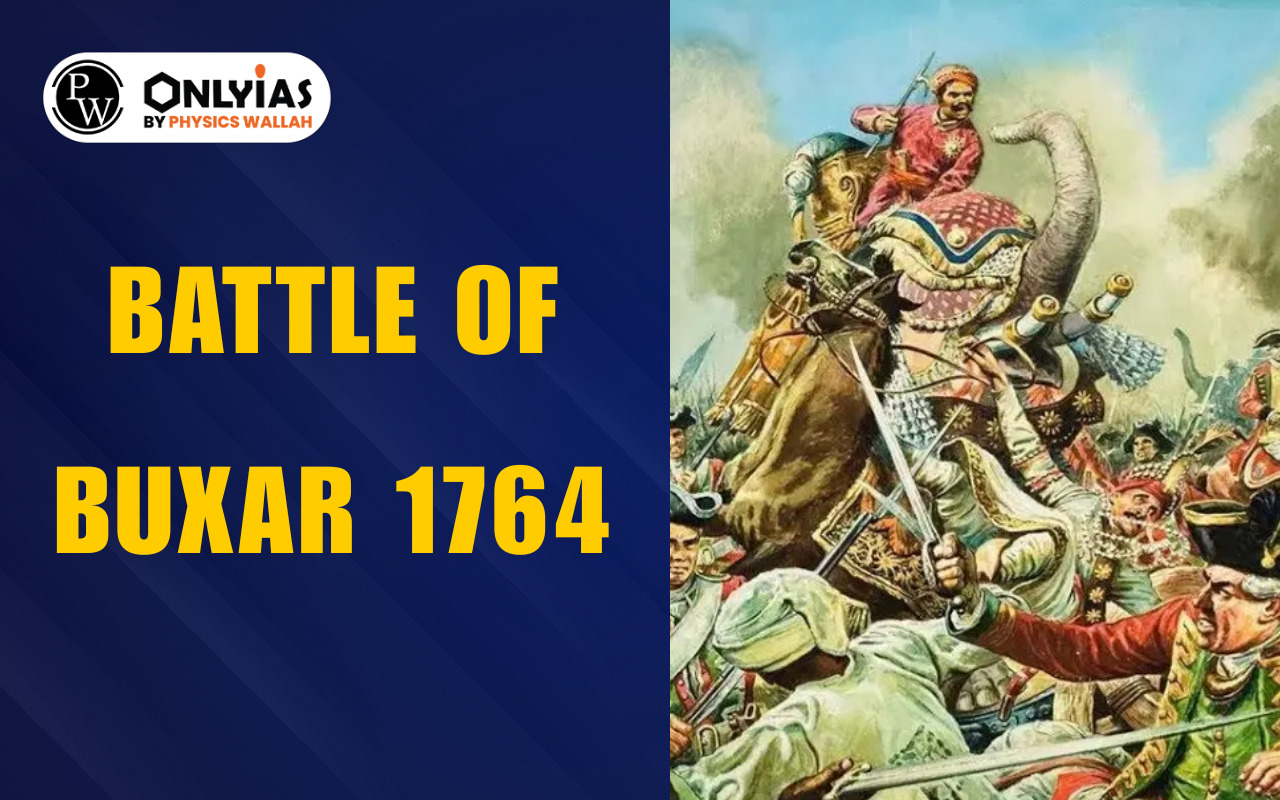Battle of Buxar took place in 1764 and was a defining battle between the British East India Company and coalition of Indian rulers comprising Mir Qasim, Shuja-ud-Daula, and Shah Alam II. British victory over them meant control over Bengal and Bihar, and the Treaty of Allahabad, which marked a turning point in Indian history.

Battle of Buxar formed a milestone in the history of India. On October 22, 1764, it took place in the town of Buxar, which was located near the Ganges River. The British East India Company fought against a powerful alliance of Indian rulers composed of Mir Qasim, the Nawab of Bengal; Shuja-ud-Daula, the Nawab of Awadh; and Shah Alam II, the Mughal Emperor. The victory of the British in this battle gave them control over Bengal and Bihar.
The victory did not merely weaken the Indian rulers but also gave the British a right to collect taxes and regulate trade. The Treaty of Allahabad was soon signed, which marked the beginning of official British dominance in the region. This victory brought the British East India Company as the most commanding force in northern India and opened a new chapter in the colonial history of India.
The battle of buxar, which took place on 22 October 1764, was a battle between the British East India Company and a formidable coalition of Indian rulers: Mir Qasim (Nawab of Bengal), Shuja-ud-Daula (Nawab of Awadh), and Shah Alam II (the Mughal Emperor).
It occurred at Buxar, a town near the Ganges River in Bihar. The victory of the British was unequivocal. Victory in this battle gave the British important power in India: they could collect taxes, control trade in major regions, and the battle showed the weakness of Indian rulers who had not united well.
This battle at buxar came out of the conflicts over control and revenue. The Nawab of Bengal, Mir Qasim, was not happy with the British. The British misused trade permits known as “dastaks,” which enable British traders to escape taxes on their lines of trade. It meant loss of tax money for Mir Qasim and created unfair trading advantages.
He tried to put an end to this, but the British refused to budge. Thereafter, tensions mounted, and an alliance was formed between Mir Qasim, Shuja-ud-Daula, and the Mughal Emperor to counter the growing British power. This tussle for supremacy resulted in the battle.
The battle occurred on 22 October 1764. The principal forces involved are illustrated in below:
| Battle of Buxar Main Participants | ||
| Side | Leader(s) | Strength (Approximate) |
| British East India Company | Major Hector Munro | 17,000 forces (Europeans and Indian sepoys) |
| Indian Alliance | Mir Qasim (Nawab of Bengal) | Over 40,000 soldiers |
| Shuja-ud-Daula (Nawab of Awadh) | ||
| Shah Alam II (Mughal Emperor) | ||
The British had fewer troops but better discipline and planning, while the Indian alliance had more soldiers yet poor coordination.
The battle of Buxar was a very important fight that changed the course of Indian history. Below are the key points that explain what happened during the battle:
This victory established the British East India Company as the leading power in Bengal, Bihar, and much of India. Taxes and trade subsequently were officially ceded through the Treaty of Allahabad.
This victory changed history. It destroyed the power of the Nawab of Bengal, the Nawab of Awadh, and the Mughal Emperor in the region. The British East India Company became the main power in Bengal and northern India.
The British began to dominate in the collection of revenue and governance. The Treaty of Allahabad in 1765 provided them with a right to collect taxes from Bengal, Bihar, and Orissa. This was their base to expand power across India.
The Battle of Buxar gave the British East India Company strong control over Bengal and Bihar. It weakened Indian rulers and made the British the main power in the region.
Check Out UPSC CSE Books
Visit PW Store
The Treaty of Allahabad was signed between the British and Indian rulers in August 1765. It gave the Company the Diwani rights, meaning the right to collect taxes in Bengal, Bihar, and Orissa, and brought a friendly alliance between the Company and Indian rulers such as Shuja-ud-Daula to protect their interests.
This treaty was a legal document that gave the British official control over these lands and marked the beginning of British political rule in India.
The British introduced a dual government system in Bengal after the battle. Power was divided between the British East India Company and the Nawab under this system: the former looked after the collection of revenue, while the latter was entrusted with maintaining law and order.
The whole system produced many troubles:
Ready to boost your UPSC 2026 preparation? Join PW’s UPSC online courses today!
The battle of buxar was a fight in 1764 where the British defeated Indian rulers. It made the Company powerful in Bengal and Bihar.
The battle of buxar was fought on October 22, 1764.
It pitted the British East India Company against a coalition of Indian rulers that included Mir Qasim, Shuja-ud-Daula, and Shah Alam II.
It was a battle fought over conflicts in trade, revenue, and British misuse of power in Bengal.
The British acquired control over Bengal, Bihar, and Orissa. The Treaty of Allahabad gave them the legal right to collect taxes.

<div class="new-fform">
</div>
